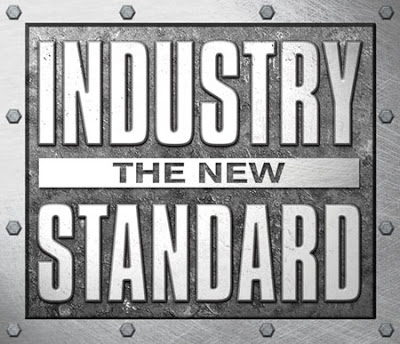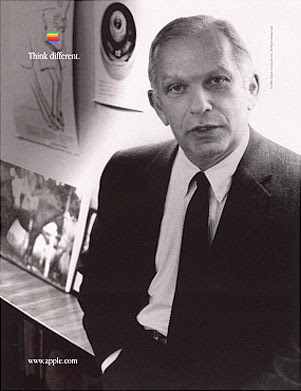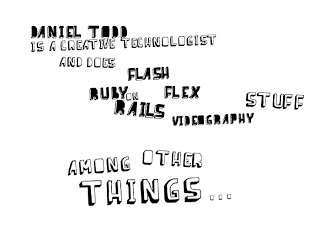Quick — name four fantastic, emotionally resonant, culturally significant and successful interactive advertising campaigns from the past year.
Came up empty? That’s what I thought. Palo Alto, we’ve got a problem.
 Actually, Palo Alto may be the problem. Fifteen years old, a vital component of the marketing landscape by any calculation, interactive advertising is still characterized in the public eye and practitioners’ minds by its technical sleight-of-hand instead of its narrative and emotive power. This has led our industry to a creative crisis that, if not resolved, will almost certainly impede our — and our customers’ — growth.
Actually, Palo Alto may be the problem. Fifteen years old, a vital component of the marketing landscape by any calculation, interactive advertising is still characterized in the public eye and practitioners’ minds by its technical sleight-of-hand instead of its narrative and emotive power. This has led our industry to a creative crisis that, if not resolved, will almost certainly impede our — and our customers’ — growth.
It’s time to engage marketers, agencies, and publishers in a public debate about creativity in interactive advertising. The IAB has set aside much of our February 22-24 Annual Leadership Conference in Orlando, Florida, for this discussion. But if you’ll indulge me, I’d like to launch the debate right here by naming names — the four enemies of online branding:
- A direct-marketing culture and tradition that devalues creativity and its long-term effect on brands
- An interactive agency business model that disincentivizes greatness and fails to penalize mediocrity
- An unwillingness by mainstream agencies to integrate technologists as full partners in the advertising creative team
- Media industry values and habits that malign and depreciate our own products, and by extension our customers’
The Banner Shibboleth
The issue of brand advertising and its future in interactive media is particularly prominent now, as the U.S. struggles through its worsening economic crisis. With much of marketing spend frozen, mainstream media suffering from significant advertising dropoffs, and interactive ad growth slowing, the blame game has become a desperate pastime in our industry, especially from premium publishers trying to maintain pricing on their display inventory.
The latest shibboleth is the online banner ad, whose formats IAB members first began standardizing more than a decade ago and subsequently realized in the “Universal Ad Package” in 2003. Industry chatter recently has begun to attribute pricing pressure to the mere existence of these standard ad units. New York Times “Bits Blog” columnist Saul Hansell this week related an encounter with MSNBC.com President Charlie Tillinghast, who told him that “that the standard sizes have allowed the advertising networks to turn display ads into commodities.”
“We made it possible for any Web site to run ads through the ad networks,” Mr. Tillinghast told Mr. Hansell. “That’s created an oversupply of space.”
 On the one hand, the charge is literally true: Standardization of anything — the ASCII character-encoding scheme, the North American 15A/125V ungrounded electrical plug and socket, the IEEE/ANSI Performance Criteria for Alarming Personal Radiation Detectors for Homeland Security — turns it into a commodity, “an article of commerce or a product that can be used for commerce.” There are many types of commodities characterized by natural or artificial standards — coal, oil, currencies and, of course, pork bellies, to name a few.
On the one hand, the charge is literally true: Standardization of anything — the ASCII character-encoding scheme, the North American 15A/125V ungrounded electrical plug and socket, the IEEE/ANSI Performance Criteria for Alarming Personal Radiation Detectors for Homeland Security — turns it into a commodity, “an article of commerce or a product that can be used for commerce.” There are many types of commodities characterized by natural or artificial standards — coal, oil, currencies and, of course, pork bellies, to name a few.
On the other hand, the charge, in relation to advertising, is historically jejune. Blaming Internet banner standards for commoditization is no different than attributing television advertising pricing fluctuations to standardization of the 30-second spot, or faulting the magazine page for the pressures on magazine advertising.
Indeed, the accusation ignores the very reason IAB members — including such historic beneficiaries of advertising standards as The New York Times and CBS — developed the ad standards in the first place: to reduce the complexity and transaction costs associated with interactive advertising, and allow the medium to scale. “The Internet is taking an important step in its evolution as an ad medium by moving in this direction of standard ad sizes,” Richy Glassberg, then the Vice President and General Manager of Interactive Sales for Turner Broadcasting, said when the first IAB banner standards were introduced in 1996. “This will make it easier for agencies and advertisers to develop advertising and will further establish the Web as a viable mass medium.”
Endorsing those standards, Mike Donahue of the American Association of Advertising Agencies, said, “The proliferation of banners has created a massive problem for advertisers and their agencies, which sometimes have to create their ads in 50 or more sizes. These voluntary guidelines will greatly streamline the advertising production and placement process and contribute to the overall growth of Internet advertising.”
Supply vs. Demand
Mr. Tillinghast (who has built MSNBC.com into a national and global news powerhouse) is also wrong in attributing the “oversupply of space” to standardization. The disequilibrium in the supply and demand for advertising inventory has a more fundamental cause: technology itself. As I noted in my first presentation to the IAB Board of Directors, using research we conducted at the consulting firm Booz & Co. in the early 2000’s on behalf of the Association of National Advertisers and some media clients, it is now possible for a 14-year-old to create a global television network with the applications that come built into her laptop computer. That means that, for perhaps the first time in any industry, new product — in our case, content and advertising inventory — can be created and distributed seamlessly, without friction, and largely without marginal cost.
To prove the point, just look at another industry standard that’s helped a commodity proliferate in recent years: ICANN’s Web site naming conventions. Thanks to it (and that other contributing standard, Internet Protocol), there are now approximately 160 million Web sites in the world — some 1.2 million of which sell advertising.
This isn’t to deny that oversupply is a problem. It is. But short of a shutdown of the Internet itself — a ban against new domain names, an ICANN moratorium, or mass public revulsion against a medium that is now the world’s most popular — new supply will always be entering this marketplace.
Yet in the very notion of commoditization lies the salvation for interactive advertising. For as in all other commodity markets, the products can be shaped and modified in ways that add enormous value to them. Raw diamonds can be polished to perfection. Cotton balls can be woven into couture dresses. Pork bellies can be sauteed into haute cuisine.
And advertising inventory can be written, designed, and produced by immensely talented creative people into communications that drive the fortunes of great companies.
Direct Response Culture
Can be… But for the most part isn’t. Given the remarkable creative potential in interactivity, online media should present a cornucopia of fabulous, affecting and effective advertising. Take the great concepting and design that went into Doyle Dane’s “Think Small” ad for Volkswagen, spoon in the equivalently brilliant production simplicity of Chiat/Day’s “Human Cartoons” campaign for the Nynex Yellow Pages, throw in the remarkable production values that for two generations characterized BBDO’s work for Pepsi, sprinkle over it the captivating long copy Ogilvy wrote for Rolls-Royce — and then add the potential for mass viral video distribution, one-to-one validation, social media engagement, blog conversation, customization on premium news and entertainment sites, and segmented reach through online networks. The marketing mind boggles.
So with all that potential, why is that so few people can name even two great, recent interactive advertising campaigns — so few people in our own industry? (For those tempted to respond, “Hey, wait a minute, what about ‘Subservient Chicken?'”, I feel compelled to point out that this breakthrough effort by Crispin Porter Bogusky for Burger King is five years old.)
Culprit no. 1, I believe, is the direct-marketing culture that is part of interactive advertising’s DNA. Lord knows, we should and do revere direct response advertising and most of what it’s bequeathed to the interactive industry. From the DR industry we’ve derived our attention to accountability — an obligation honored only in the breach through the history of mainstream media and agencies. From direct marketing we have learned that data and its management are central to everything we do. Many of the growth areas for interactive publishers, including lead generation and customer relationship management, are based on direct marketing innovations.
 But direct marketers are almost defiantly disinterested in the aesthetics of communications — and the long-term impact aesthetics has on brand value and company activities. Notwithstanding such legendary direct marketing efforts as American Express’s — where every element of the brand is supported through all channels, from main media to direct — even direct mailers will say that creativity, designed to build and reinforce such well-established, long-term brand-uplifting effects as “likeability,” is not native to the direct response business. Attention to beauty is more the exception than the rule in a marketing-services segment that prizes today’s response to today’s offer over long-term brand lift.
But direct marketers are almost defiantly disinterested in the aesthetics of communications — and the long-term impact aesthetics has on brand value and company activities. Notwithstanding such legendary direct marketing efforts as American Express’s — where every element of the brand is supported through all channels, from main media to direct — even direct mailers will say that creativity, designed to build and reinforce such well-established, long-term brand-uplifting effects as “likeability,” is not native to the direct response business. Attention to beauty is more the exception than the rule in a marketing-services segment that prizes today’s response to today’s offer over long-term brand lift.
This isn’t a criticism, but a reflection of the way the marketing mix is supposed to work, and has worked for decades. When I first visited the fabled Publisher’s Clearing House in Port Washington, Long Island 20 years ago, I was shocked at the contrast between their clinical understanding of the “what” and their utter detachment from the “why.” PCH’s 12 writers and four art directors were involved continuously in developing new mailing “involvement devices” — pre-Internet instigators of what we today call “consumer engagement” — and, through rigorous testing, could tell down to fractions of a percentage point the lift to gross revenues each would provide.
But how such devices as the “television tag” and the “Jaguar stamp” worked to influence consumers, and what the implications were for the magazines that used PCH to boost subscriptions — that the direct marketers could not say.
“Don’t Know Why”
”If you use a manila envelope, people respond more than they do to a white envelope, but we don’t know why,” Lee Epstein, president of Mailmen Inc., a Long Island company that inserts materials in direct-mail envelopes, told me at the time. ”The postage-paid stamp in the upper-right-hand corner – someone once made a mistake and tilted it. It increased response, but we don’t know why.”
Almost everyone in magazine publishing can relate a horror story about how direct marketing’s ingrained disdain for beauty and branding sundered a property — how a circulation department for an elegant fashion or furnishings periodical, intent on meeting a mailing response target, flooded low-income neighborhoods with cheap come-ons, driving the publication’s demographics downward and turning off the very advertisers the magazine was supposed to attract. “Most direct-mail letters, they said, don’t use good writing; don’t worry if you split an infinitive,” Frank H. Johnson, a direct mail pioneer who began his career at Time Inc. in the 1930’s, once told me. “And you’re never supposed to be funny.”
Bill Jayme, one of the greatest direct mail writers of the past century, agreed. ”The general attitude in direct mail is to talk down, assume people are stupid and repeat everything,” he told me nearly 20 years ago. The late Mr. Jayme was a rare exception. “I haven’t had any qualms about using a word like ‘peregrinations.’ If the context is right, the reader’ll understand and will feel flattered.”
But this notion that your consumer was part of a community of interest with the brand marketer, not a “target” to turn into a “conquest” at any cost, was and is rare in direct marketing. The late, great magazine journalist Clay Felker once related to me the struggles he, Harold Hayes, and others charged with reinventing Esquire magazine in the early 1960’s had persuading the publication’s proprietors to abandon the “damn it letter” — the long-time direct mail control missive that opened with those words and chortled over pinup girls. However damaging this legacy of Esquire’s earlier girlie magazine days was to the rebranding effort the newcomers were charged with spearheading, the publisher was reluctant to change it, because it brought in subscribers. Mr. Felker succeeded in his effort only when he retained Mr. Jayme, who wrote an intelligent letter that finally outperformed the debilitating “damn it letter.”
Why Creativity Matters
 Agency founder David Ogilvy revered direct marketing, yet also was the ad industry’s leading apostle of brand imagery. In his marvelous new biography of Ogilvy, The King of Madison Avenue, former Ogilvy & Mather Chairman and Chief Executive Kenneth Roman relates how, for years, Ogilvy (shown at left) struggled to reconcile these “two schools of advertising” that “were diametrically opposed to each other.”
Agency founder David Ogilvy revered direct marketing, yet also was the ad industry’s leading apostle of brand imagery. In his marvelous new biography of Ogilvy, The King of Madison Avenue, former Ogilvy & Mather Chairman and Chief Executive Kenneth Roman relates how, for years, Ogilvy (shown at left) struggled to reconcile these “two schools of advertising” that “were diametrically opposed to each other.”
By the time Ogilvy founded his agency in 1948, he had succeeded. As committed as he was to the principle that advertising must sell, Ogilvy also understood the risks posed by a fixation on immediacy and accountability — primarily the brand marketer’s loss of public esteem and the ability it bestowed to maintain pricing power. In remarks made 50 years ago that seem eerily prescient today, Ogilvy told the author Martin Mayer:
“Most brands that need help today were given sleazy, bargain-basement brand images in the thirties, when money was scarce and it was a great help to seem cheap. They’ve suffered from it. When I first came into this country Packard was one of the great quality cars. Then they began getting tough, going after the middle-priced market. What do you think they would give today to get back their old image?’
To marketers and others who complained that brand-image advertising “is unmeasurable, it’s all a lot of airy-fairy nonsense,” Ogilvy had a simple response: “Well, is it?”
Ogilvy was one of the last century’s great salesmen. In his book, Mr. Roman spins wonderful yarns about the hours “DO” spent as an apprentice chef in the kitchen of the Majestic Hotel, one of Paris’s best restaurants, and the years he spent peddling Aga cookers, a premium stove, door to door across Scotland, in the 1930’s. What Ogilvy learned from these experiences is that successful selling is at root about one thing: faith — your ability to provide to others a dream with infinite horizens. The exquisitely designed plate of cuisine classique — ah yes, you are living the good life! This remarkable stove — why, your home will be akin to the finest restaurant!
Creating Faith
In taking this lesson to his agency, Ogilvy also understood that creating faith in customers was not a distant exercise; he would not succeed solely by delivering creatively constructed messages across pages or airwaves to a faceless mass of consumers. There was always a more immediate, more present customer: the clients themselves.
This is perhaps the most important reason advertising creativity matters. It inspires the marketer. It encourages the sales force. It provides them, and all the other constituencies in and around the company and the brand, the faith that they will be able to sell the product in to the retailer, close the sales on the dealer’s lot, win new commissions, and better their own lives. Great advertising is their rallying cry, the flag they march under. The mouseclick must be matched by their heartbeat.
This is the reason no major new advertising campaign ever debuts de novo on broadcast network television, but rather is premiered at the franchisees’ convention, the national dealers’ conference, and the annual sales meeting. The campaign, the ads, are the gospels — the stories that excite and unite the tribes, that spur them to go out and do battle for a higher cause. Done right, an advertising campaign transforms the advertiser itself into an army of true believers. For how can you expect to win new converts, if you, yourself, are not a true believer?
The notion that a narrative could be used to drive people toward higher goals is as old as philosophy itself. As Socrates says in concluding the myth of the cave in Plato’s Republic: “Without having seen the Form of Good and having fixed his eye upon it, one will not be able to act wisely, either in public affairs or in private life.”
Jerry Della Femina described this cultural power — this corporate cultural power — of great advertising more profanely but no less profoundly in his famous book, From Those Wonderful Folks Who Brought You Pearl Harbor. “The client is standing up there waiting at the train station for the New Haven to take him into New York and he’s dying to be stopped by his buddies,” Mr. Della Femina wrote in his classic memoir. “He is dying for them to compliment him on his new campaign.”
“‘Boy, you’ve got a hell of an ad there.’ That’s what the client wants to hear.”
Missing Reputational Currency
The gap between the mouseclick and the heartbeat is nowhere more evident than in many of our digital advertising agencies. To illustrate, allow me to pose an admittedly trick question: What’s the biggest difference between a traditional creative agency and a new-age digital agency?
Answer: Traditional creative agencies are named after human beings. Digital agencies are named after inanimate objects or nonsense words.
Check out the winners of the 2008 IAB MIXX Awards — the industry’s premier showcase for creativity and effectiveness. Winner, Best in Show: Tequila. Winner, Brand Positioning: Digitas. Winner, In-Game Advertising: Jogo. Silver Award, Brand Positioning: Blockdot. Silver Award, Digital Video: Tribal DDB.
Look, we love these agencie. And to be fair to them, the depersonalization of advertising predated the digital revolution. But it’s a particular tragedy in the digital arena, because it has robbed the industry of its most potent fuel: reputation capital.
From their inception in the 19th Century, advertising agencies, like law and accounting firms, represented their origins and duties as client service businesses in their names. “N. W. Ayer & Son,” “Batten, Barton, Durstine & Osborne,” “Young & Rubicam” — all implied a sense of personal responsibility on the part of founders to their customers.
Not incidentally, they also conveyed a sense of opportunity to their ambitious employees. Advertising was always a low-barrier-to-entry business. If success depended solely on the ability “to render service and make money,” as Lord & Thomas leader Albert Lasker once put it, why, anyone could try it!
 And they did — at no time more prolifically than during the Creative Revolution of the 1960’s. The concurrent post-war Baby Boom, suburbanization of America, and spread of network television put a special premium on quality advertising content; more products and more communications channels meant more ads, and more need to cut through the growing clutter to engage audiences. Writers and graphic designers determined that they, too, might have value — perhaps more value than account handlers. So writers like David Ogilvy and Bill Bernbach (shown right) and graphic designers like George Lois took the plunge and founded agencies.
And they did — at no time more prolifically than during the Creative Revolution of the 1960’s. The concurrent post-war Baby Boom, suburbanization of America, and spread of network television put a special premium on quality advertising content; more products and more communications channels meant more ads, and more need to cut through the growing clutter to engage audiences. Writers and graphic designers determined that they, too, might have value — perhaps more value than account handlers. So writers like David Ogilvy and Bill Bernbach (shown right) and graphic designers like George Lois took the plunge and founded agencies.
Cultural recognition and financial growth rapidly came their way, emboldening other creatives to believe they could trade the personal reputations they had won using little more than their pens and palettes into successful agencies. The “swinging agencies,” Jerry Della Femina called them: Wells, Rich, Greene; Delehanty, Kurnit & Geller; Smith/Greenland; Daniel & Charles. Many were spawned directly from the creative department of Doyle Dane Bernbach. Between January and July 1969 alone, more than 100 ad shops were launched, most in New York, all of them gassed up with reputational capital.
Agency Road Map
The calculation was clear and direct: Get known as the creator of great, successful campaigns, and you, too, could start your own business, bring some clients along, and make an awful lot of money on little capital investment. And to this day, that remains the road map for success in the agency business. If you want to understand why the Cannes Lions International Advertising Festival has become the largest destination gathering of advertising professionals in the world — “more than 10,000 delegates from 85 countries… inspired by the 28,000 pieces of work on display,” as its Web site says — that’s all you need to know.
And that’s the reason to mourn, and perhaps war against, the depersonalization of the agency business. Sure, there are several valid explanations for it: to scale, advertising had to globalize and industrialize; and increasingly, one could maintain that successful client service is about the team, not the individual.
But if, as I have argued, great advertising not only stimulates consumers but galvanizes that team to build and sustain strong companies and brands, then we must recognize that its creation requires both collaboration and individual achievement. Advertising, in this regard, is no different from any other form of communication that seeks after broad, material, cultural impact — no different than film, or theatre, or journalism: If stardom is not rewarded, there is little incentive toward superiority. Worse, perhaps, if mediocrity is not penalized, there is little deterrence to decline.
There’s good news lurking beneath the surface. The rising category of digital advertising award winners — agencies making the hearts beat and the mice click — are the great creative agencies of the past two decades: Hill Holliday, Goodby Silverstein, McKinney, BBDO, TBWA Chiat/Day — companies whose names (or, well, acronyms) have meaning.
But we must unleash and laud by name the next generation of stars. Interactive advertising, I suspect, will only take its place in the cathedrals of cultural significance when we start to recognize and reward the creative individuals who make greatness happen.
Creative Technologists Arise
Those individuals carry at least one non-traditional title. To the advertising creative partnership that traditionally has teamed a copywriter and an art director, a third member must be added: the creative technologist.
The creative technologist is only now beginning to gain public recognition. Google the term and you’ll find hundreds of help wanted ads at agencies and publishers. But I’d never seen the phrase in the mainstream media until two weeks ago, when New York Magazine writer Emily Nussbaum published an exciting piece about the transformation of uptown rival The New York Times. “There is something exhilarating about watching web innovation finally explode at The Times,” she wrote. “… Everyone seems to have a job title like ‘creative technologist,’ giving the entire floor a mad-scientist air.”
 Yet these are not mad scientists; they are essential partners in modern media, central to the craft of communication today. Creative technologists, says Mark Avnet, professor and head of a training program for them at Virginia Commonwealth University’s VCU Brandcenter, are “fluent and confident in using media technologies appropriately in the service of branding, advertising, marketing and persuasion.” VCU’s program — the world’s first at an accredited university, launched only six months ago — aims to train “leaders and members in ‘new’ creative teams, as interactive designers, creative directors, producers, directors of interactive media, members of account teams, as entrepreneurs and in emerging creative technology positions in forward-thinking agencies.”
Yet these are not mad scientists; they are essential partners in modern media, central to the craft of communication today. Creative technologists, says Mark Avnet, professor and head of a training program for them at Virginia Commonwealth University’s VCU Brandcenter, are “fluent and confident in using media technologies appropriately in the service of branding, advertising, marketing and persuasion.” VCU’s program — the world’s first at an accredited university, launched only six months ago — aims to train “leaders and members in ‘new’ creative teams, as interactive designers, creative directors, producers, directors of interactive media, members of account teams, as entrepreneurs and in emerging creative technology positions in forward-thinking agencies.”
Among contemporary agency leaders, the only one who speaks publicly about the indispensability of creative technologists is RG/A Chairman, CEO and Global Chief Creative Officer Bob Greenberg.
“There are critical creative needs that didn’t exist in the old advertising,” says Mr. Greenberg, who counts 130 technologists in his New York office. “Advertising is no longer just about the display ad or the TV commercial or the banner; it’s about creating meaningful tools and architecting user experiences. Our technology group, they can keep up to speed technically with the top people at HP or IBM. But they also understand how to work with others to create an application that will lead to community.”
Mr. Greenberg stresses that calling the creative technologist the “third member” of the creative team is, at best, metaphorical. There are several new skill sets creative agencies today must possess to attract, engage, and influence consumers — Flash video development, software design, information architecture, animation, CRM, iPhone app design, and ActionScript development among them — and no one individual will have expertise in all. The point is that the men and women with these skills must be treated as full partners in the campaign development process, contributors to “the Big Idea,” not as executional afterthoughts buried in the basement.
The Bigger Idea
This evolution of the creative partnership is as transformational a moment as was the invention of the copywriter-art director partnership exactly 60 years ago, at fledgling shop Doyle Dane Bernbach. Influenced by his former colleague, the legendary graphic designer Paul Rand, agency founder Bill Bernbach realized that effective persuasion required the full integration of words and images — and of their expert creators.
“Up until that time in agencies, the art director was a layout man,” George Lois, a Bernbach acolyte, once told me. “He may have been a very, very good layout man. He may have been a gifted layout man. But he was not a thinker. He was a layout man.” So secondary were they that they worked in different rooms, often on different floors, than the copywriters, who referred to these layout men as “wrists.”
“Before Bernbach, there were slogans, great lines, and they got laid out,” Mr. Lois said. “Well, Bernbach didn’t believe in catchy lines as much as he believed in attacking the heart and soul. So Bernbach gave the art director power.”
Significantly, this occurred at the dawn of the last information revolution — the introduction of broadcast network television, which also occurred exactly 60 years ago. The advent of the interactive revolution now heralds the empowerment of the creative technologist. Clearly, their ascent adds complexity to advertising agency and media management: Communications leaders will have to learn how to foster collaboration among larger and more diverse teams — in addition to motivating their individual stars, as I’ve suggested is necessary. But agencies and media have no choice but to add them to their capability mix.
“You can’t have an art director and a writer who go off for two weeks in a room and try to come up with a Big Idea that is rendered into a print ad or billboard, and the interactive accompaniment to that is just matched luggage,” Mr. Greenberg says. “You have to get to a bigger idea. You now may need eight people around the table.”
All That Remains
If you’ve had the good fortune to spend time in RG/A’s Bauhaus-style headquarters on Manhattan’s West Side, or a block away in the offices of New York Times Digital, or across the country at Google’s campus in Mountainview, or a little bit north of that, in the AKQA agency’s HQ across from AT&T Park in San Francisco, or across the country again, in the converted tobacco factory that houses the transforming McKinney agency in Durham, NC, you’ll be struck immediately by all this creative ferment — this reinvention of the way we communicate the world and persuade consumers.
Yet that is not the conversation that dominates our ecosystem today.
Instead, we’re engaged in a war over “pork bellies.” We’re publicly complaining, on stages and in pages, about commoditization. We talk incessantly about “remnant inventory.”
 I’ve got to tell you, every time I hear an interactive publishing executive use the term “remnant,” I want to take a scissors, shred the dress, and stab the salesman. How dare you, I think, deprecate your property in that way? You’re trying to sell couture at Bergdorf’s, yet you’re using the language of Seventh Avenue garmentos to describe it?
I’ve got to tell you, every time I hear an interactive publishing executive use the term “remnant,” I want to take a scissors, shred the dress, and stab the salesman. How dare you, I think, deprecate your property in that way? You’re trying to sell couture at Bergdorf’s, yet you’re using the language of Seventh Avenue garmentos to describe it?
With all due respect to the IAB’s members — who are, after all, my bosses — and to the media agencies (who are among our most important customers), I’d like to suggest that our seller-buyer-driven culture is devaluing not just the pricing but the potency of our medium. We must stop acting as if we’re selling schmattes, and start acting like the makers of magic that the best of us are — and always have been.
As I’ve written and any economist would affirm, supply-demand disequilibrium, exacerbated by a recession-driven flight of marketing budgets from above-the-line functions to promotional availabilities, is the root cause of today’s pricing pressures in media. Yes, it’s bad, and yes, it will get worse before it gets better. But it’s no reason for discussions of commoditization to dominate our business — now, or at any time. Remnants may clothe you when you are needy, but they will not make you feel grand.
Interactive Advertising Grows
And that, fundamentally, is the business we are in — of providing men and women the information they need and they entertainment they want to think and feel and act in different and better ways. And therein lies the power of our medium, its unprecedented power, for it allows people to find the information, to talk back to the news, to create and share the entertainment, to shape the event. And that is the force of advertising in this medium — not the fact that in some places, at some times, it can be purchased in the bargain basement.
That is the reason why, while other media platforms contract, interactive advertising is still growing: especially during a recession, not all time and space are created equal.
That’s especially true within our industry. Some interactive publishing companies are growing bigger and better than others. There are many reasons for their relative success: the addition of sophisticated yield management capabilities, the creation of customer-facing services businesses, the development of consumer insights capabilities, the training of a more consultative sales force, the highlighting and fulfilling of creative opportunities for clients, the implementation of sophisticated market- and product-segmentation strategies, the undeniable attractiveness of quality content to men and women hungering for information and entertainment.
But these publishers’ achievements and their bright prospects all derive from their willingness to ask — and answer with actions — one fundamental question: How do I add value to my consumers’ experiences and my customers’ businesses?
In our obsession with immediacy and accountability, we have overlooked the more subtle yet more powerful ways that companies, brands, and fortunes are built through time. Our IAB Annual Leadership Meeting, Ecosystem 2.0, themed “Brands Battle Back,” will launch this needed conversation.
For digital publishers and agencies, here’s what I hope this conversation leads you to do:
- Motivate greatness among your best creative people, for their work inspires consumers and customers alike.
- Collaborate — creative agencies and publishers — with each other and within yourselves to develop outstanding advertising and communications products.
- Assemble writers, designers, and technologists into teams that can engage the intellect and emotions of audiences and individuals across all channels, toward the goal of creating enduring brands.
- Prove to your customers that causing the heart to beat quick is at least as important as making the mouse click.
Finally, and politely, let’s ask the sellers and the planners, the publishers and the senior buyers, to continue their price negotiations — but quietly, in the back room, away from the customers crowding our front counters and our home pages.
Let’s return to a time when advertising and media conversation was owned by the creatives, the editors, and the impresarios — when it was dominated by debates about the craft of persuasion, about what moves people. After all, isn’t that the reason we’re in this business?
